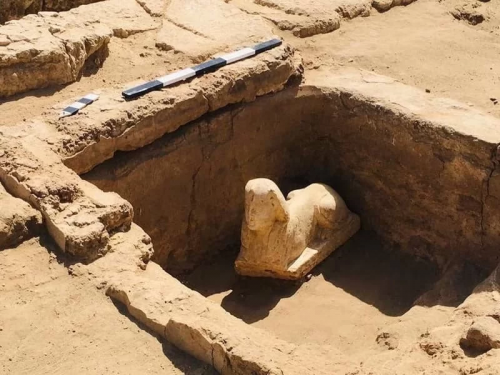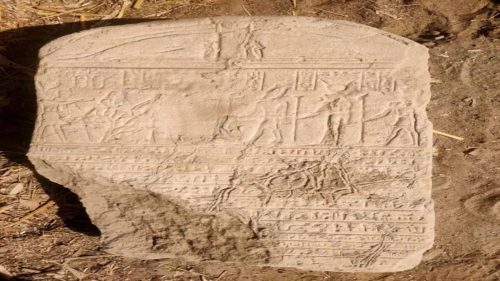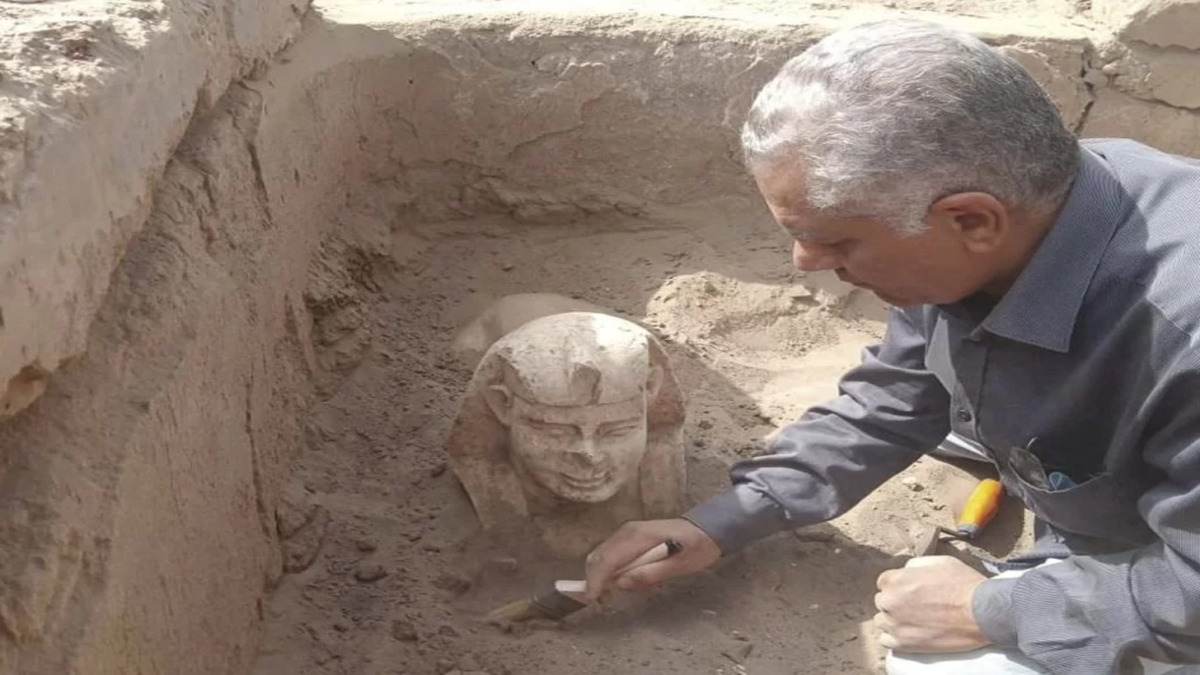An Egyptian archaeological mission has discovered a sphinx inside a Roman-era limestone structure.
The artifacts were found in the Dendera temple in Qena province, 450 kilometers south of the capital Cairo, the antiquities ministry said in a statement on Monday. According to the ministry, archaeologists believe the statue’s smiling features may be those of the Roman emperor Claudius, who expanded the empire’s rule into North Africa between AD 41 and 54. The mission, led by Dr. Mamdouh El Damaty, former minister of antiquities and professor of archeology at Ain Shams University in Cairo, was working east of the Dendera temple in the southern province of Qena. The structure is built using limestone and mortar, consisting of two levels. The lower level contains a large Byzantine-era water collection tank, where researchers found a Roman-era sphinx statue.
The sphinx is shown wearing a Nemes, a royal headdress worn by the pharaohs to symbolize their rule. Above the forehead is a Uraeus, an Egyptian cobra used as a symbol of sovereignty, royalty, divinity and divine authority. The statue is much smaller than the impressive and famous Sphinx in the Giza Pyramid complex, which is 20 meters tall. “The statue is really beautiful, its face is characterized by real features that are depicted quite precisely”. Dr. El Damaty said.

“Traces of a smile can be seen on the edges of her mouth, which has a dimple on both sides. There are traces of yellow and red in the face. A tablet dating back to Roman rule in Egypt was also discovered next to the sphinx.

It is inscribed with hieroglyphics and demotic, an ancient Egyptian script. The archaeological mission intends to continue the work in Dendera, where it is believed that Nero, the Roman emperor who preceded Claudius, built a small temple dedicated to Isis. Archaeologists believe that an underground path connects the temple of Isis to another temple on the eastern side of the complex dedicated to the ancient Egyptian god Horus.
